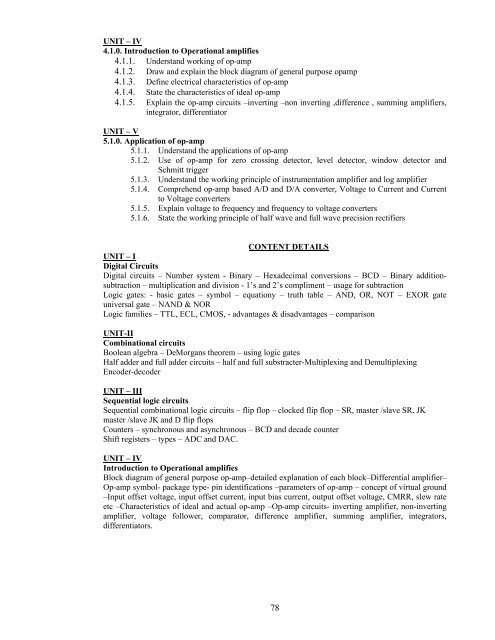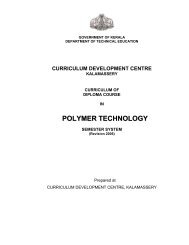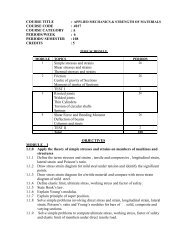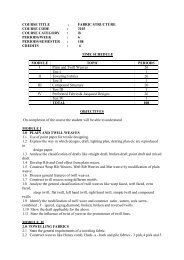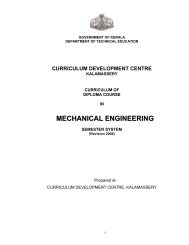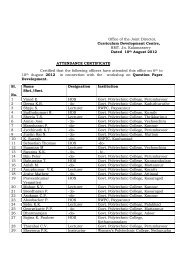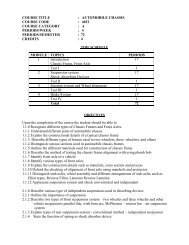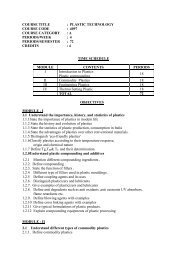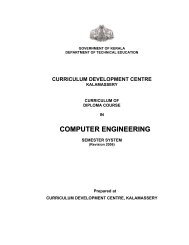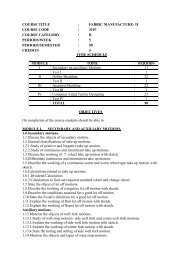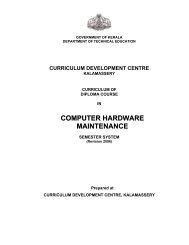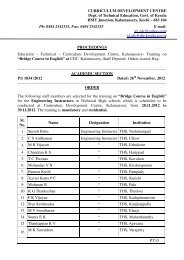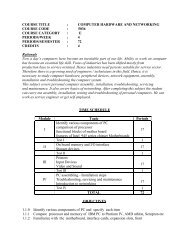13 - Curriculum Development Centre, Kalamassery
13 - Curriculum Development Centre, Kalamassery
13 - Curriculum Development Centre, Kalamassery
- No tags were found...
You also want an ePaper? Increase the reach of your titles
YUMPU automatically turns print PDFs into web optimized ePapers that Google loves.
UNIT – IV4.1.0. Introduction to Operational amplifies4.1.1. Understand working of op-amp4.1.2. Draw and explain the block diagram of general purpose opamp4.1.3. Define electrical characteristics of op-amp4.1.4. State the characteristics of ideal op-amp4.1.5. Explain the op-amp circuits –inverting –non inverting ,difference , summing amplifiers,integrator, differentiatorUNIT – V5.1.0. Application of op-amp5.1.1. Understand the applications of op-amp5.1.2. Use of op-amp for zero crossing detector, level detector, window detector andSchmitt trigger5.1.3. Understand the working principle of instrumentation amplifier and log amplifier5.1.4. Comprehend op-amp based A/D and D/A converter, Voltage to Current and Currentto Voltage converters5.1.5. Explain voltage to frequency and frequency to voltage converters5.1.6. State the working principle of half wave and full wave precision rectifiersCONTENT DETAILSUNIT – IDigital CircuitsDigital circuits – Number system - Binary – Hexadecimal conversions – BCD – Binary additionsubtraction– multiplication and division - 1’s and 2’s compliment – usage for subtractionLogic gates: - basic gates – symbol – equationy – truth table – AND, OR, NOT – EXOR gateuniversal gate – NAND & NORLogic families – TTL, ECL, CMOS, - advantages & disadvantages – comparisonUNIT-IICombinational circuitsBoolean algebra – DeMorgans theorem – using logic gatesHalf adder and full adder circuits – half and full substracter-Multiplexing and DemultiplexingEncoder-decoderUNIT – IIISequential logic circuitsSequential combinational logic circuits – flip flop – clocked flip flop – SR, master /slave SR, JKmaster /slave JK and D flip flopsCounters – synchronous and asynchronous – BCD and decade counterShift registers – types – ADC and DAC.UNIT – IVIntroduction to Operational amplifiesBlock diagram of general purpose op-amp–detailed explanation of each block–Differential amplifier–Op-amp symbol- package type- pin identifications –parameters of op-amp – concept of virtual ground–Input offset voltage, input offset current, input bias current, output offset voltage, CMRR, slew rateetc –Characteristics of ideal and actual op-amp –Op-amp circuits- inverting amplifier, non-invertingamplifier, voltage follower, comparator, difference amplifier, summing amplifier, integrators,differentiators.78


